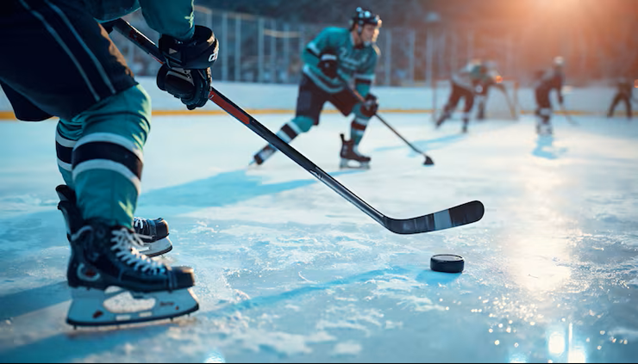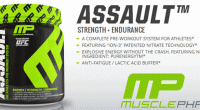Ice Hockey Safety: The Importance of Protective Gear in Injury Prevention
Ready to hit the ice but worried about staying safe while playing hockey? Understanding common injuries and how to prevent them with the right protective gear helps you stay safe and play without setbacks. With solid preparation and some smart choices, you’ll feel more confident, react faster and stay in the game longer.
In this article, you’ll find out how protective pads work, where they go on your body, and how they help prevent injuries when worn correctly.
Injuries in Ice Hockey and the Importance of Protective Gear

Ice hockey is fast, thrilling and full of action, but just as in any other sport, injuries are inevitable. As a player, you probably know what can go wrong, but you should also know how to protect yourself and minimize the chances of injuries.
Concussions and Head Injuries
Most head injuries are serious, and in some cases, they can cause long-term damage. Concussions are caused by collisions or falls and require immediate medical attention. Some of the symptoms are dizziness, confusion, or headaches.
Wearing a properly fitted helmet is your first line of defence against head trauma. With the right protective gear and prompt care, you can reduce the risk of serious injury and stay safer on the ice.
Common Upper Body Injuries
In hockey, due to falls and body checks, shoulder dislocations, wrist sprains, elbow injuries and broken collarbones are more common than you think. This type of injury requires rest, immobilization, physical therapy, and, in more serious cases, surgery to heal properly.
Elbow injuries, such as hyperextensions or bruising, can be extremely uncomfortable and significantly restrict your range of movement. To help prevent these injuries, consider impact-absorbing ice hockey elbow pads that protect your arms during intense games.
Lower Body Injuries
Ankle sprains, knee strains and groin pulls are the most common lower-body injuries from ice hockey. To recover, players need to rest, use ice packs and engage in strengthening exercises. Overuse injuries, such as inflamed tendons and muscle strains, develop gradually over time, making balanced training and proper technique your top priorities.
Opt for supportive gear like padded shorts and knee guards to add an extra layer of protection and help reduce the risk of injuries.
Facial and Hip Injuries
Cuts, bruises and broken teeth are not a rarity in ice hockey either. A helmet with a face shield, mouthguards, and a full-face shield helps prevent these.
Hip injuries from skating stress need time, rest, therapy, or surgery. Adding padded shorts and reinforced girdles to your gear can offer extra support and help reduce the risk of hip-related injuries.
Types of Protective Hockey Pads
Hockey is a fast-paced, demanding sport that calls for sharp skills and solid protection. Essential ice hockey protective pads include shoulder pads, ice hockey elbow pads, shin guards, padded pants and goalie pads.
Here’s how each one improves your safety on the ice:
Shoulder Pads
Your upper body: shoulders, chest, and back take a lot of hits while playing, so wearing shoulder pads is a must. They also protect your upper body from collisions, falls, and stick impacts. While allowing you to move freely, they cover your shoulders, chest, and back with foam and plastic padding.
The right pair should be made from breathable materials and feel snug. Look for adjustable straps to make them more comfortable. Whether you’re a beginner or an established professional, shoulder pads help reduce the risk of dislocations and fractures.
Elbow Pads
The elbow hockey pads protect your elbows and forearms from falls, hits, and other related injuries. They should fit snugly, stay in place, and work well with other protective gear.
Opt for lightweight hockey elbow guards that incorporate foam and hard shells for comfort and resistance. Some pads offer additional forearm coverage but test them first to make sure they don’t restrict your mobility before stepping onto the ice.
Shin Guards
As an ice hockey player, your lower legs are constantly in the line of fire. That is a great reason to add shin guards to your gear and protect your shins, knees, and ankles if you haven’t already.
Choose ones with sturdy plastic shells and soft padding for impact absorption. Make sure they cover the area below the knee to your skates and have secure straps to help keep them in place.
Pants with Pads
Hockey pants shield your hips, thighs, and tailbone. They use durable, impact-resistant materials to handle the hits. Make sure they sit comfortably at your waist and reach the top of your kneecaps for a full range of motion while keeping you protected.
Goalie Pads
If you’re guarding the net, your gear needs to be tougher. Goalie pads are thick and strong to block fast shots. They protect your legs and knees while still letting you move. Wear them with chest protectors, gloves, elbow pad set, a helmet, and a neck guard for the best results.
Proper Preparation for Play and Injury Prevention
Here’s how to get ready for hockey and avoid injuries:
- Learn to Skate: Before you even consider joining a game, take beginner classes offered by rinks to make sure you can skate forward and backward.
- Stay in Shape: To stay fit, keep up with cardio, strength and flexibility training during the off-season.
- Warm Up: Before the game, do some light exercises, stretch your body, or skate slowly for 3–5 minutes.
- Cool Down: After each game or practice, stretch your shoulders, hips, knees and calves to loosen up and reduce soreness.
- Drink Water: To stay hydrated, drink 24 oz two hours before playing, 8 oz right before, and sip every 20 minutes during play.
- Be Prepared for Injuries: Be mentally prepared for the possibility of injuries; your coach likely knows first aid and has a plan for emergencies.
- Return Safely: If you’re injured, don’t return to the game until you feel better and your doctor confirms.
Final Thoughts
Ice hockey is fast and intense, so staying safe is a priority and starts with the right safety gear. When you choose the right protective gear, you can focus on the puck, the play, and the thrill of the game. Wear shin guards, shoulder pads and elbow guards, and prepare your mind and body before and after each game. When you put your well-being first, you build strong habits and enjoy the game to the fullest.



